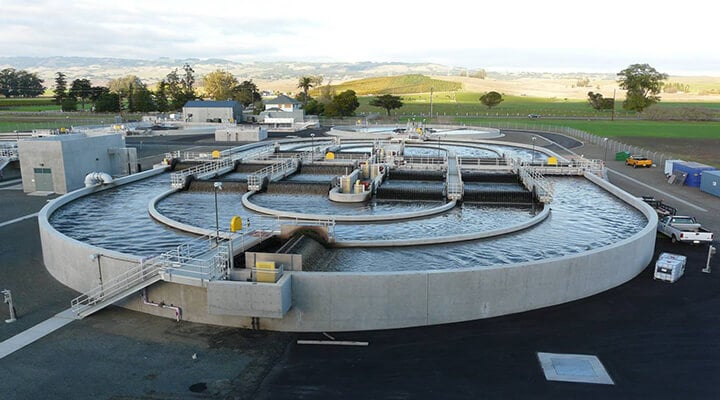Evoqua Water Technologies (now part of Xylem) has announced that it has been selected by Payson City, Utah, to expand the City’s wastewater treatment plant. The plant expansion will address the needs of this growing community as well as meet current and future nutrient removal requirements.
The City’s current wastewater treatment plant is an aerobic biological treatment design utilizing trickling filters. In order to meet nutrient removal requirements, specifically phosphorus removal, it was determined that a new treatment plant would be required. Evoqua’s Orbal® System was ultimately selected and will be designed to treat 4.1 million gallons per day (MGD) with the flexibility to expand the plant in the future to 6.2 MGD.
The Orbal system, has been on the leading edge of simultaneous nitrification-denitrification (SND) for BNR for more than 50 years. Easily identified by its concentric loop design, the Orbal system features independent tanks-in-series that allow for low levels of BNR phosphorus removal with limited operator interface demands.
How it works:
The Orbal system is a suspended growth activated sludge process that begins when screened and de-gritted wastewater is directed to the outer channel of the basin and mixed with RAS from the clarifiers to form the system’s mixed liquor. The combined mixed liquor passes progressively through the Orbal system’s channels before passing on to the final clarifiers. The outer channel is operated as an aerated anoxic reactor with dissolved oxygen levels near 0 mg/L. Simultaneous nitrification/denitrification and phosphorus release occur in this zone. Oxidation reduction potential (ORP) is used to monitor the condition of the outer channel. The middle channel is a transition zone between the outer anoxic channel and the inner aerobic channel. Its condition may vary depending on the load coming into the plant. The inner channel is operated in an aerobic state with dissolved oxygen levels at or above 2.0 mg/L. This supports the final nitrification required to complete treatment. Each channel is physically separated so the environment within each channel can be controlled precisely to produce consistent treatment results.
Forsgren Associates, Inc. is the consulting engineer on this project and worked closely with Evoqua to provide the design and engineering services for Payson. Alder Construction Company will serve as the general contractor. The plant is expected to be commissioned in 2026.
